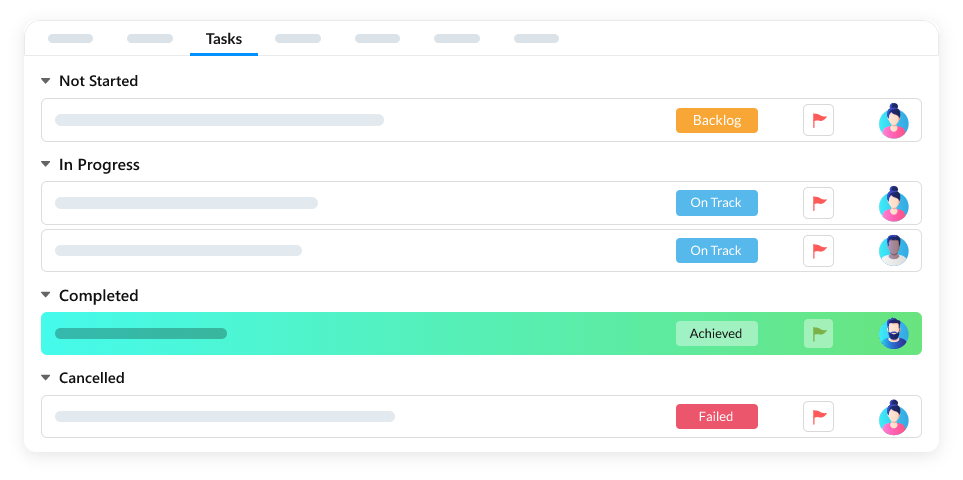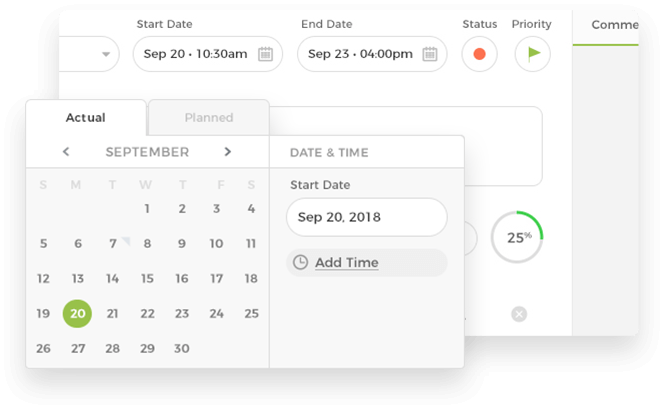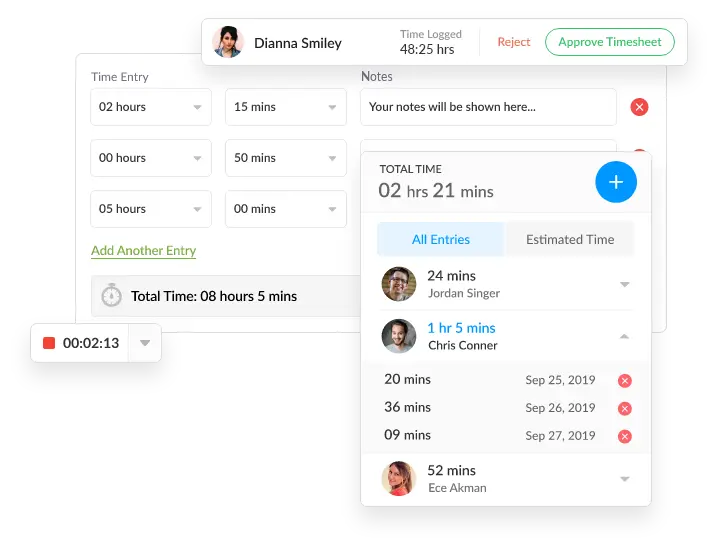Are you feeling overwhelmed with all the tasks you need to accomplish? Do you feel like it’s impossible to get everything done in a timely manner? If so, then it might be time to start setting priority levels for tasks.
Prioritizing is essential if you want to streamline your workflow and stay on top of deadlines. It helps you focus on the most important tasks first, which can help reduce stress and improve productivity.
This guide will show you how to set effective priority levels for tasks so that you can maximize efficiency and get more done in less time. With the right strategies, you’ll be able to manage your workload more effectively and get more done in less time.
We’ll explore why prioritizing is important, discuss different types of priority levels, and provide helpful tips for making sure your priorities are in line with your goals. So let’s get started!
What is Priority Level for Tasks?
Priority level is a way of setting the order in which tasks should be completed. It allows you to prioritize activities and manage your workload more efficiently.
Depending on the task, priority levels can range from low to high. Low-priority tasks are generally those that can wait until they become more urgent or time-sensitive, while high-priority tasks take precedence over other activities and require immediate attention.
Setting proper priorities helps ensure that all important projects get done in a timely manner and that no deadlines are missed.
Importance of Setting Task Priority Levels

It is important to set priority levels for tasks because it allows you to focus your attention and energy on the most important tasks first. This helps you to get the most important things done and avoid getting overwhelmed by less important tasks.
Prioritization can help ensure that tasks are completed in the most efficient and effective way possible. It also allows you to focus on the most important tasks first so that you can make sure they are done correctly and on time
When you are prioritizing your tasks, it is important to consider what is most important to you and your goals. You may want to prioritize tasks that are due soon, or that are related to your most important goals. You may also want to prioritize tasks that are more challenging or that will take more time.
Prioritization can also help you avoid procrastination by ensuring that you are working on the most essential tasks first.
How to Set Priority Levels?
As you go through your day, you are constantly bombarded with a never-ending stream of tasks, both big and small. It can be tough to know which tasks to prioritize and when to set them as a high, medium, or low priority. This is why it is important to have a system for setting task priority levels for your tasks.
You can set priority statuses for your tasks in a few different ways. Here is a step-by-step guide on how you can get started with it:
1. Establish Needed Tasks

You need to do a few key things when establishing needed tasks. First, you need to make a list of all the tasks that need to be done. This can be done by brainstorming with your team or colleagues, or by looking through previous project files.
Establishing needed tasks helps ensure goals are met within the allotted timeline while controlling scope creep throughout the course of the project.
Establishing needed tasks can help to break down a larger project into smaller, more manageable chunks that can be completed in sequence. it also allows for greater organization and efficiency, helping you save time and money while still achieving your desired results.
Additionally, clearly defining the tasks at hand can make it easier to delegate specific duties or responsibilities to other people involved in the project. Ultimately, taking the time to establish needed tasks upfront will help ensure the successful completion of any given task or project!
Once you have a good idea of which tasks are most important and need to be completed first. You can then start working on creating a more detailed plan for completing these tasks, including who will do what and by when.
2. Establish Deadlines

Establishing deadlines is an important element of any project, allowing individuals to effectively plan and manage their time. When used correctly, setting a deadline can be a great motivator for people to complete tasks within the desired timeline.
Deadlines should be realistic, and achievable and allow enough flexibility for unexpected challenges or issues that may arise during the course of the project. Establishing deadlines also encourages teams to work together collaboratively in order to meet all objectives in a timely manner.
When establishing deadlines, it is important to ensure that everyone understands their individual tasks and the expected timeline for completion. It is also important to allow for open communication between team members so that any potential issues can be addressed in a timely manner.
Additionally, making sure that everyone understands their roles and responsibilities and is committed to meeting the deadline will help ensure success.
3. Estimate Time Needed

When it comes to setting priorities, it is important to evaluate the time needed for each task. Estimating the time required can help avoid missing deadlines or overworking yourself. When creating an estimate of how long a given task may take, consider factors such as complexity, difficulty level, and any potential roadblocks that may arise along the way.
Additionally, make sure to include some wiggle room in case additional tasks come up that must be addressed before completion. By taking these steps into consideration when estimating time needs for your priority levels, you can better manage your workload and plan ahead with greater accuracy.
Once an estimate is made, management should regularly review progress against the estimated timeline and adjust as needed based on changes or new information. This will help keep projects moving forward at a steady pace while keeping everyone informed about their roles within the project.
After you’ve considered all of these factors, you can start assigning a priority status to your tasks. There will often be clear-cut high-priority tasks, while others may fall into a lower-priority category. Let’s see how you can go about this.
4. Assign Priority Level

Now that you have compiled a list of necessary tasks, assigned deadlines, and the time needed to complete each task, it is time to assign priority status to each task in the process.
Priority levels are typically assigned as high, medium, and low. High-priority tasks should be completed first, followed by medium and then low-priority tasks.
To assign a priority level to your tasks, consider the urgency of the task in relation to its importance in addition to the pointers explained above. Is it important that it is completed quickly or does it need to be done but can wait? Consider the consequences if the task is not done on time. Are there any risks involved in delaying completion?
Once you have assessed each task’s importance and urgency, assign a high priority to tasks that must be done quickly and cannot wait. Assign medium priority to tasks that are important but can wait, while assigning low priority to those that are least important and can wait until all higher priorities are handled.
Benefits of Setting Priority Levels
There are many benefits associated with setting priority levels, ranging from improved productivity and organization to better decision-making capabilities. Let’s take a look at some of the most beneficial outcomes of setting priority levels:
1. Increased Efficiency
One of the main benefits of setting priority is increased efficiency. When you prioritize your tasks, you can focus on the most important ones first, which helps you get more done in less time. This is because you are not wasting time on tasks that are less important or can be deferred.
Additionally, by prioritizing tasks, you can ensure that you are using your resources, such as time and money, effectively. This can help you to achieve your goals more quickly and with less effort.
Also, it helps individuals or teams work more efficiently by focusing on high-priority tasks first and ensuring that low-priority tasks are handled last. This can help you better manage your time and resources, allowing you to complete the most important tasks in a timely manner and ensure that lower-priority tasks are not neglected.
2. Improved Time Management
Setting priority levels can greatly improve time management. When you prioritize your tasks, you can ensure that you are spending your time on the most important and urgent tasks first.
This helps you to avoid wasting time on less important tasks or distractions. By focusing on the most important tasks first, you can also ensure that your deadlines are met and that you are making progress toward your goals.
Furthermore, it can also help you to better plan your time. When you have a clear sense of what needs to be done and in what order, you can create a schedule or to-do list that helps you to manage your time more effectively. This can help you to stay on top of your work and make the most of your time.
All in all, setting priority can greatly improve time management by helping you to focus on the most important tasks, manage your workload effectively, and plan your time more efficiently.
3. Increased Productivity
When priorities are clearly defined, it becomes easier to measure progress toward completing each task promptly. This encourages each team member to stay productive and focus on the goals at hand, increasing overall productivity throughout the organization.
It also helps ensure that you are spending your time and energy on the things that matter the most. This helps you to get more done in less time, and make progress toward your goals more quickly.
Another way that setting task priority levels can increase productivity is by reducing distractions and procrastination. When you have a clear sense of what needs to be done and in what order, it is easier to stay focused and motivated. This can help you avoid getting sidetracked by less important tasks or distractions, and instead stay on task and get more done.
Additionally, priority statuses can also help you manage your workload more effectively. By identifying which tasks are most important and which can be deferred or delegated, you can ensure that you are not overwhelmed by too much work. This can help you to reduce stress and increase productivity.
Furthermore, it can help you better plan your time and resources. By identifying what is most important, you can make sure you are using your time and resources effectively which leads to a better outcome with less effort.
Check this:
How to Use the Urgent And Important Matrix to Transform to Prioritize Like a Pro?
What Is The Best Software to Set The Priority Levels Matrix?
There are a lot of different software options out there that can help you set a priority matrix for your tasks. However, not all of them are created equal. Some are better than others at helping you prioritize your work and get things done efficiently.
One of the best software options for setting priority levels matrix is nTask. nTask is a project management tool that helps you keep track of your work and get it done efficiently. It allows you to create task lists and then assign priority status to each task. You can also set deadlines and reminders for yourself so that you don’t forget about important tasks.
nTask has multiple options for visual project management with which you can easily gauge your progress. Color-coded details make it much easier to identify your progress. In addition, nTask offers a variety of management features that make it one of the best tools for task and project management.
If you are unsure of its functionality, you can start with a demo or a free trial of 7 days to learn more about the nTask project management tool.
Manage Work Priorities
Using nTask!

Conclusion
Setting priority levels for tasks can be a valuable tool for keeping ourselves organized and on track. With the tips provided in this ultimate guide, you now have the knowledge to effectively set priority levels for tasks that will help you become more productive throughout your day.
Utilizing this system of task prioritization, it is now possible to focus on the most important tasks first while also ensuring that all of your other jobs are not neglected. Start incorporating these strategies today and watch as they lead to greater overall efficiency and success!

